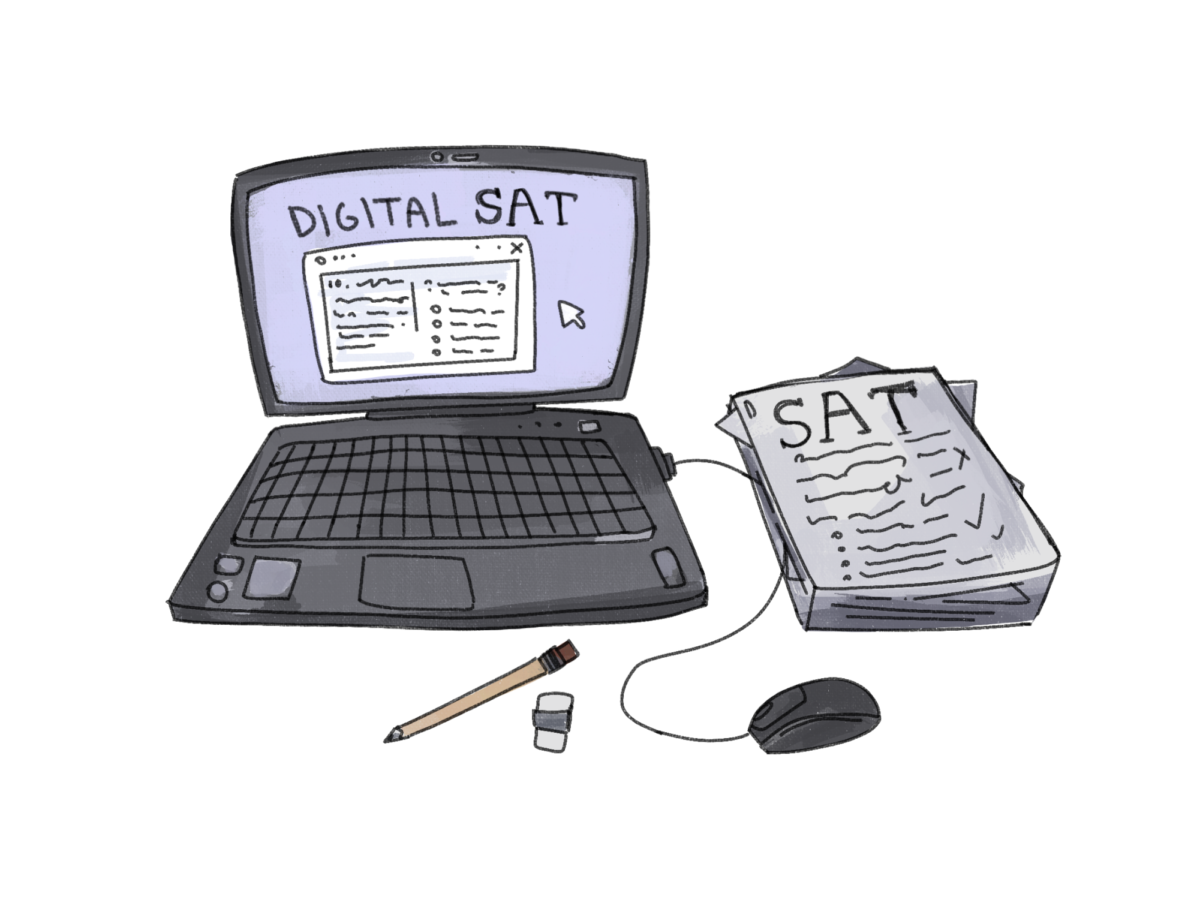Many students have dreaded the PSAT since its creation. But despite the weight they may carry in college admissions, remarkably few RM students know about the change from paper to digital PSATs.
“I actually didn’t know about the switch [in PSAT formats]. I took it last year when I was in tenth grade on paper,” junior Naomi Kiawu said.
Kiawu is not alone. Despite College Board’s announcement that “starting in Fall 2023, all students taking PSAT-related assessments will take the digital tests,” students all over the world—even those taking it this year, remain unaware of the new format.
The PSAT isn’t just changing mediums; the structure of the exam is changing too. The previously two hour and 14 minute test has been reduced in length by 30 minutes, containing 98 questions instead of the original 139.
“I think it’s a nice change. I like paper tests better. But in this case, with all these changes to help students, I think it’s a great change,” junior Aydenn Keith said.
According to Khan Academy, the new PSAT will contain the same four sections and still be scored out of 1520. The exam aims to measure the same skills. However, this measurement will be done with different content. The digital PSAT is more geared toward skills needed for college and career readiness.
The reading section will feature shorter passages with single questions. In the past, the test contained long reading passages followed by multiple questions. As for math, the word problems will also be shorter and students will be allowed access to a calculator on both math sections.
However, arguably the most impactful quality of the digital PSAT is its use of adaptive testing. NWEA Connection explains that adaptive testing, which has been a part of MAP testing for many years, uses a computer-adaptive test (CAT) to personalize exams.
Answering a question correctly will make your next question more difficult while getting one incorrect will make the following question easier. Scores are awarded based on both the number of questions you answer correctly and their difficulty level.
Kiawu and Keith who will be taking the PSAT this year are both fond of the new test.
“I think it’s a lot better because a lot of times I do have trouble with fractions or decimals and now with a calculator [for both math sections] and an online version, it’ll make it a lot easier for people like me,” Kiawu said.
Despite Kiawu’s optimism, the digital PSAT has room for error.
“Still, I can see technical issues happening,” Kiawu said. “With MAP testing and other online tests, I can see people going, ‘Oh, my computer’s not working’ or ‘it says I’m not part of the class.’ There’s always going to be someone who has a login issue and needs help.”
When it comes to digital testing, some students believe the faults outweigh the advantages.
“The paper-to-pencil method is better with the stress of the short time period. Being able to physically annotate the test helps so much,” senior Grace Wade said.
For Wade, college readiness is about more than just intelligence.
“It’s about stamina too. The paper SAT’s long passages test not only students’ knowledge, but their character,” she said. “Character indicates perseverance and an ability to cope with difficulties which is really important to college life.”









